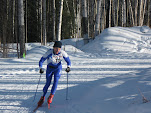On Transitioning
Run through the winter--When it comes to winter running, I'm an A to A- slacker, but I do make a point of running at least once a week, sometimes twice, with an weekly average of about 8-10 miles.
Transition also means compromise--The transitions have usually been recovery periods, so I just take it light for those first few weeks, to ease out of one season and into the other. Usually I'll run three times the first week, four the next, and so on. The compromise is that I always seem to gain a few pounds, but that tends to come off once the mileage gets a little higher.
Run mostly easy--I don't schedule any hard interval sessions or long runs during this four to six week period. Most of the running is at a very aerobic pace (for me about 8 minutes/mile or slower for that first month), with occasional pickups or faster running.
Build gradually--This year my mileage went from averaging about 10 miles a week through the winter until the last week of March. Then I had three week of 20 mile weeks, including a week with several days off just to get a breather. Those weeks allowed the joints to take some additional pounding so I upped it to 40, 47, and 50 over the consecutive weeks since.
Run hills--Most of the hard running been uphill, where the pounding is minimized while maximizing cardiovascular demand and muscle development to the quads and hip flexors. This seems to slow the initial transition to faster running, but by June or July I feel that much stronger.
Aerobic doesn't mean always easy--Although the first few weeks are pretty easy, I do start incorporating "tempo" running and progression runs that range from easy aerobic to marathon pace, and lactate threshhold (15k).
Striders--By about my third week I'll do a set of six to eight striders, of about 20 sec, about once a week just to get the feel of leg turnover. In a few weeks I'll add some additional speed work (but tend to do the minimum!).
Plan ahead--Figure out which races are most important and figure out how these can be incorporated into the schedule. I like multispeed training, and this will be helpful to prepare for the Midnight Sun Run 10k (low or sub 35) and Flint Hills Mile (low 4:50s) in June, followed by the Santa Claus Half (low or sub 1:19) in early July. [The schedulers of these local series events need to get their heads on straight, however (they actually got it right last year, but they snafu'd it again this year by scheduling three of the five biggest local races of the year into a two week window. What kind of planning is that? Well that's another issue)]. After that I'd like to do either another 10k in Anchorage or a half marathon in August. Chicago Marathon in October, but that's a long way off.


3 Comments:
Hey, I just tried adding a super thoughtful comment, and it didn't register.
Short reprise: This may be the first time in your marriage that your wife is wrong because, I, for one, found your post on the ski-run transition to be incredibly instructive and helpful.
Its underlying message of patience and gradual transisitioning is one that even we veteran athletes need reminding of.
Thanks,
Grambo
Hmmm...I tried posting a couple times, but it didn't take. So, once more -- your wife, quite possibly for the first time ever, is wrong. Not only are posts like these instructive and helpful as I manage my own transition, but they give you a great opportunity to flex your word-smithery.
Seriously, the take-home message here is one I need to heed -- transition slowly, with patience, both with adding distance and speed.
Much as it's tempting to rush back toward running fitness after doing other sports or a layoff, I'm finally learning to pace my training. It's even more important now that I'm in my late-40s.
Thanks.
Grambo
Grambo, your comments didn't pop up immediately, because I now have appear to have the power to accept or reject before the comments take. Thanks.
Post a Comment
Subscribe to Post Comments [Atom]
<< Home